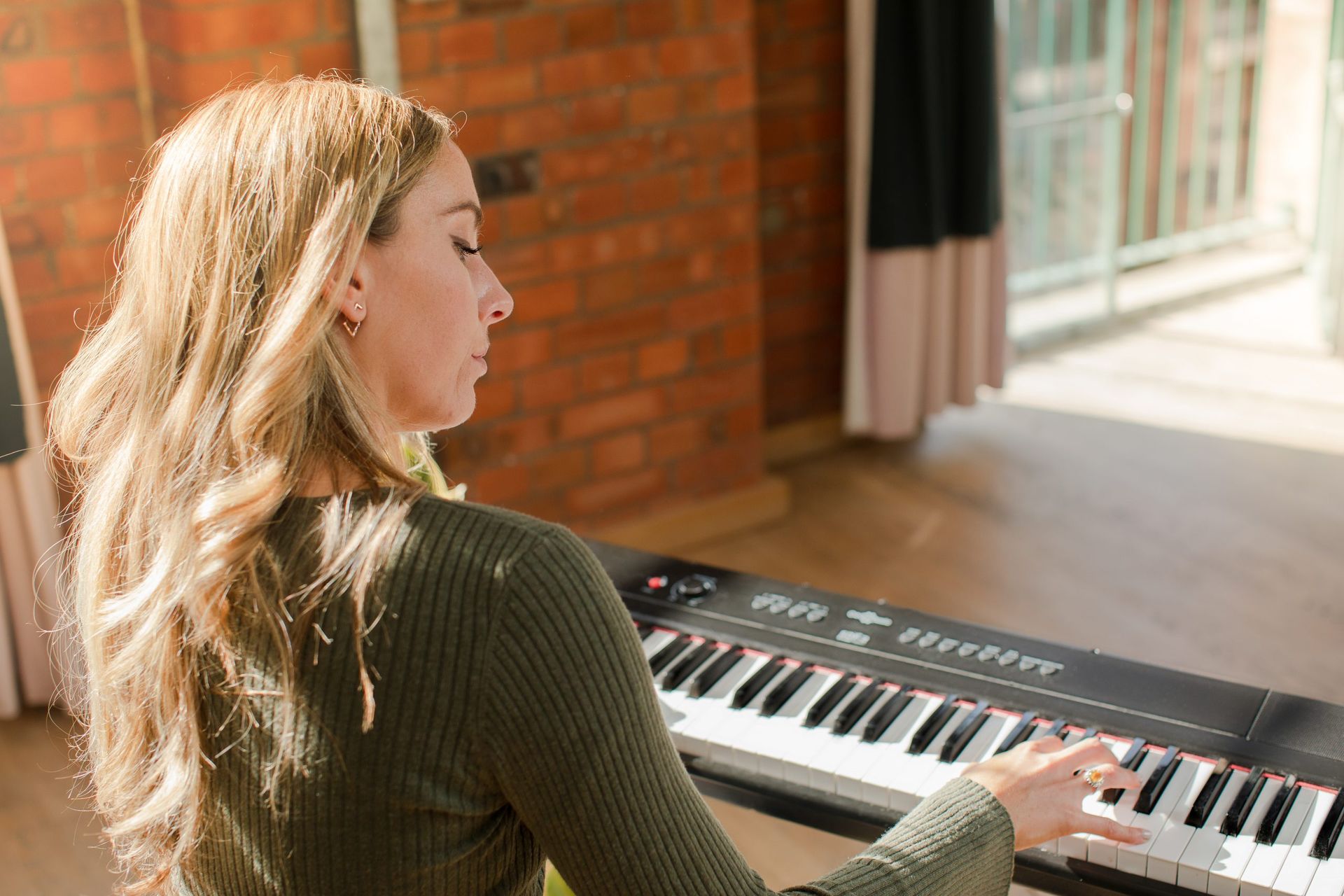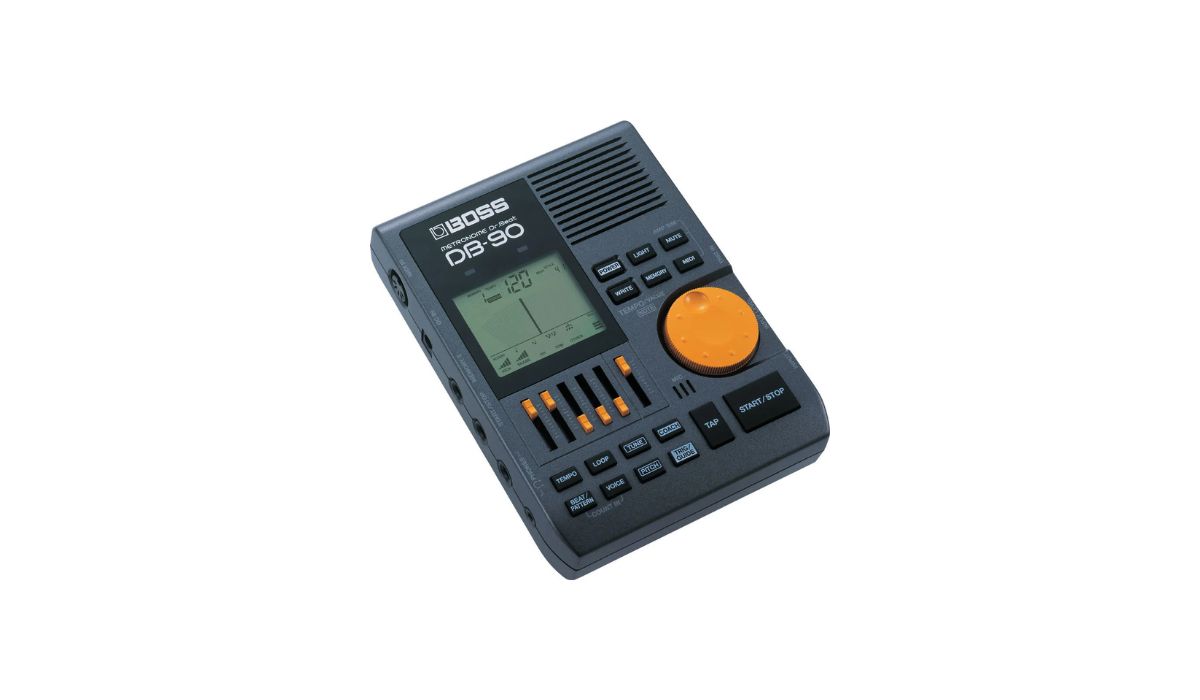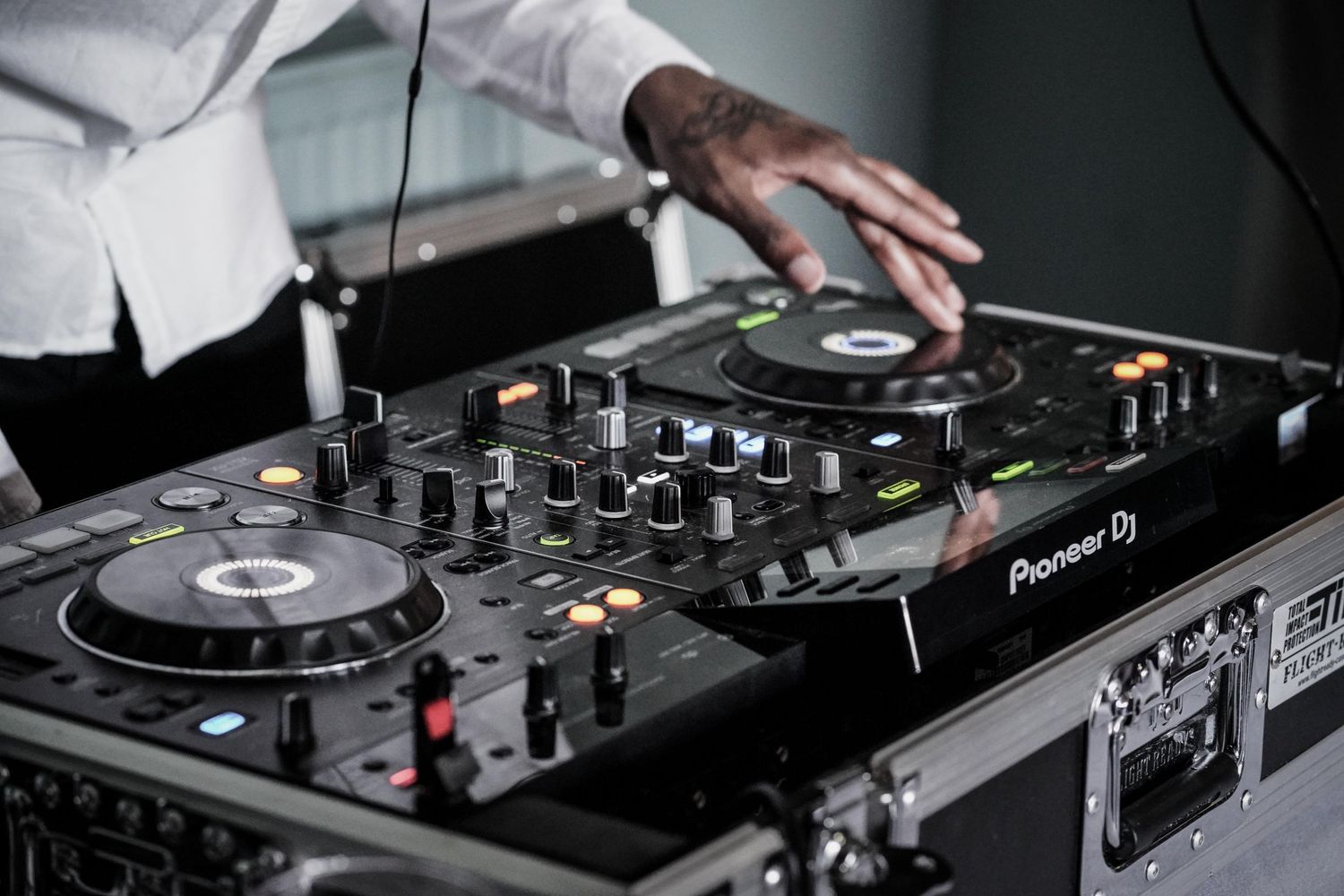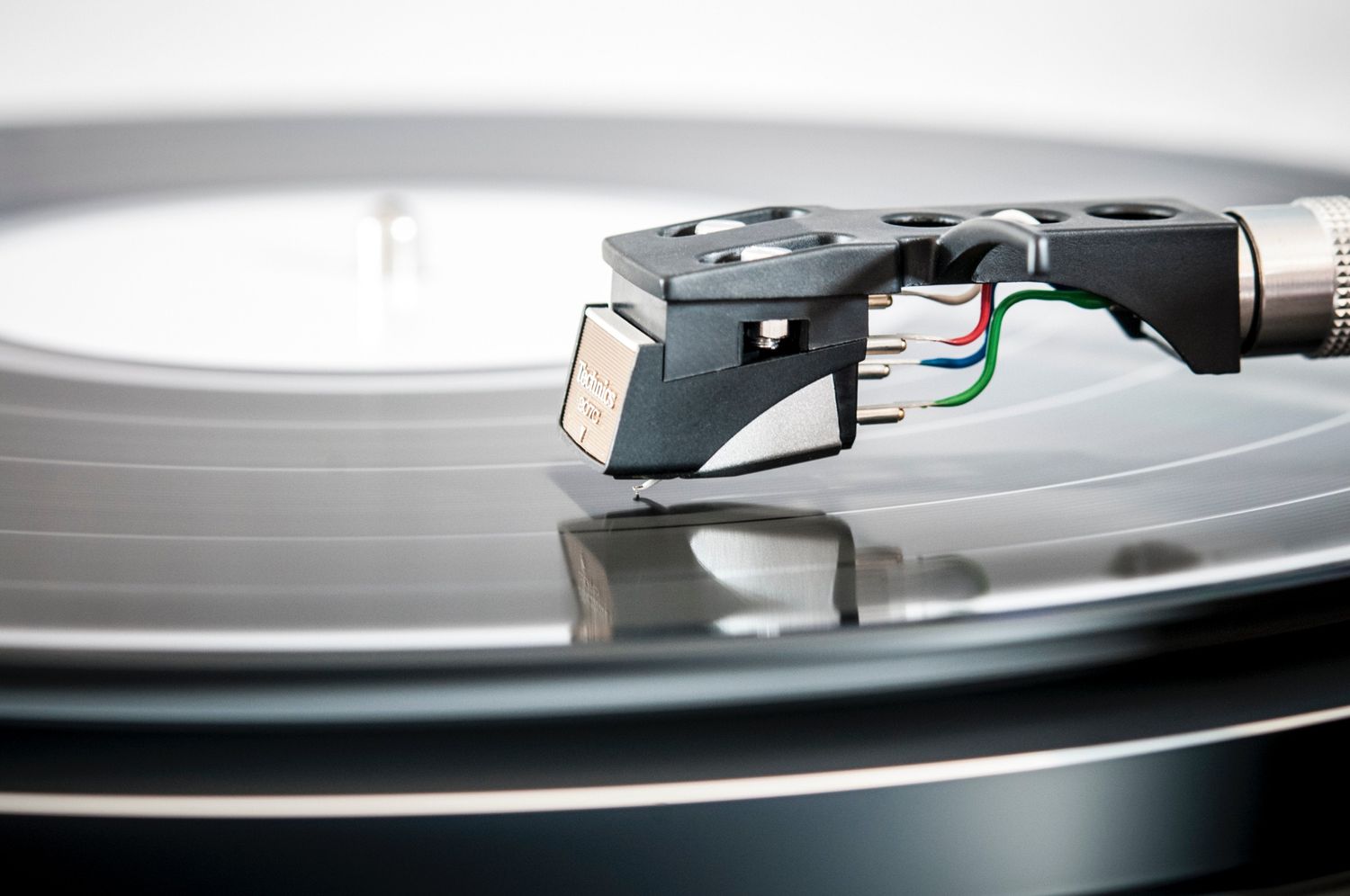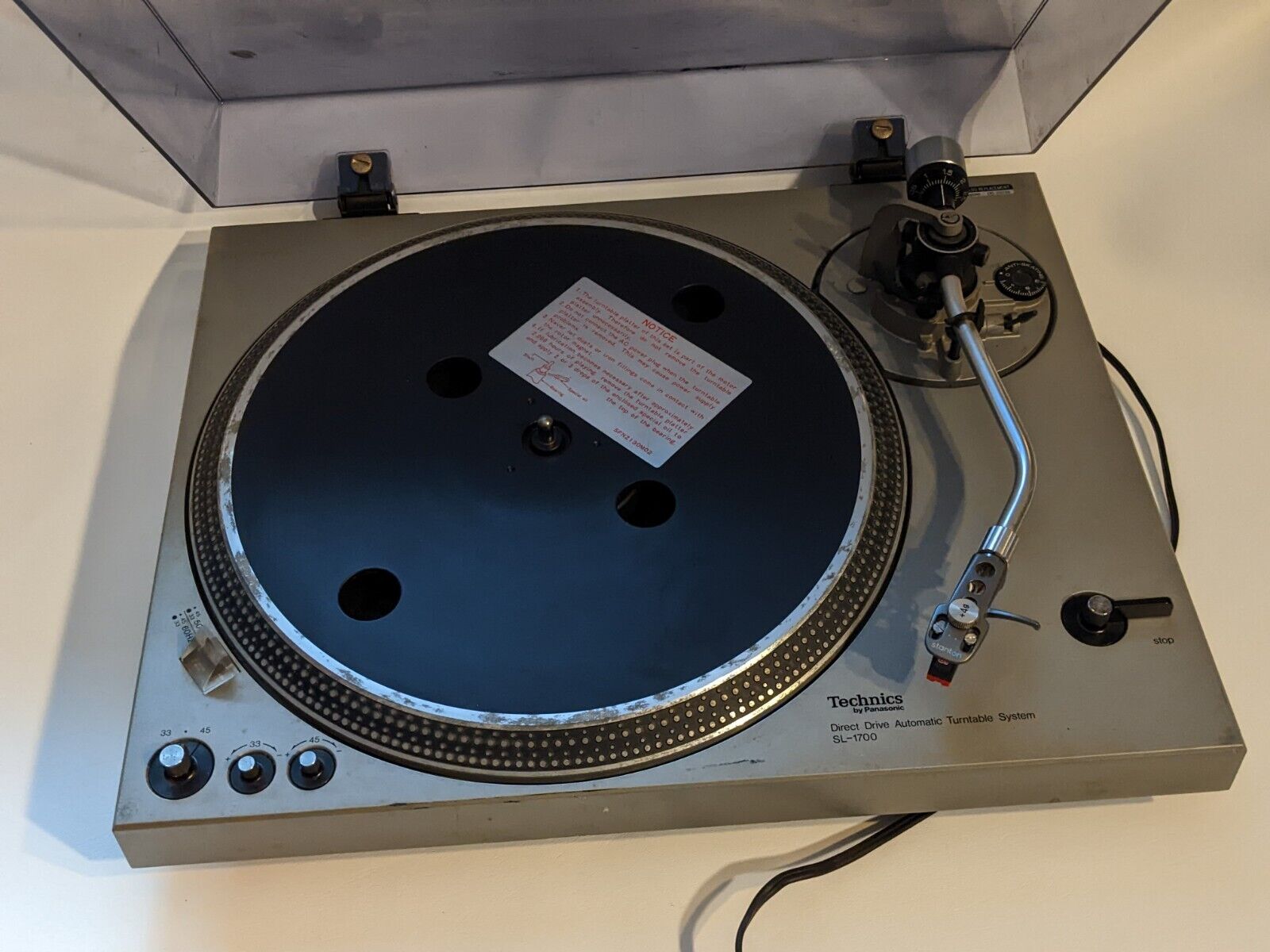Home>Devices & Equipment>Turntable>What Is Tempo Range On Turntable
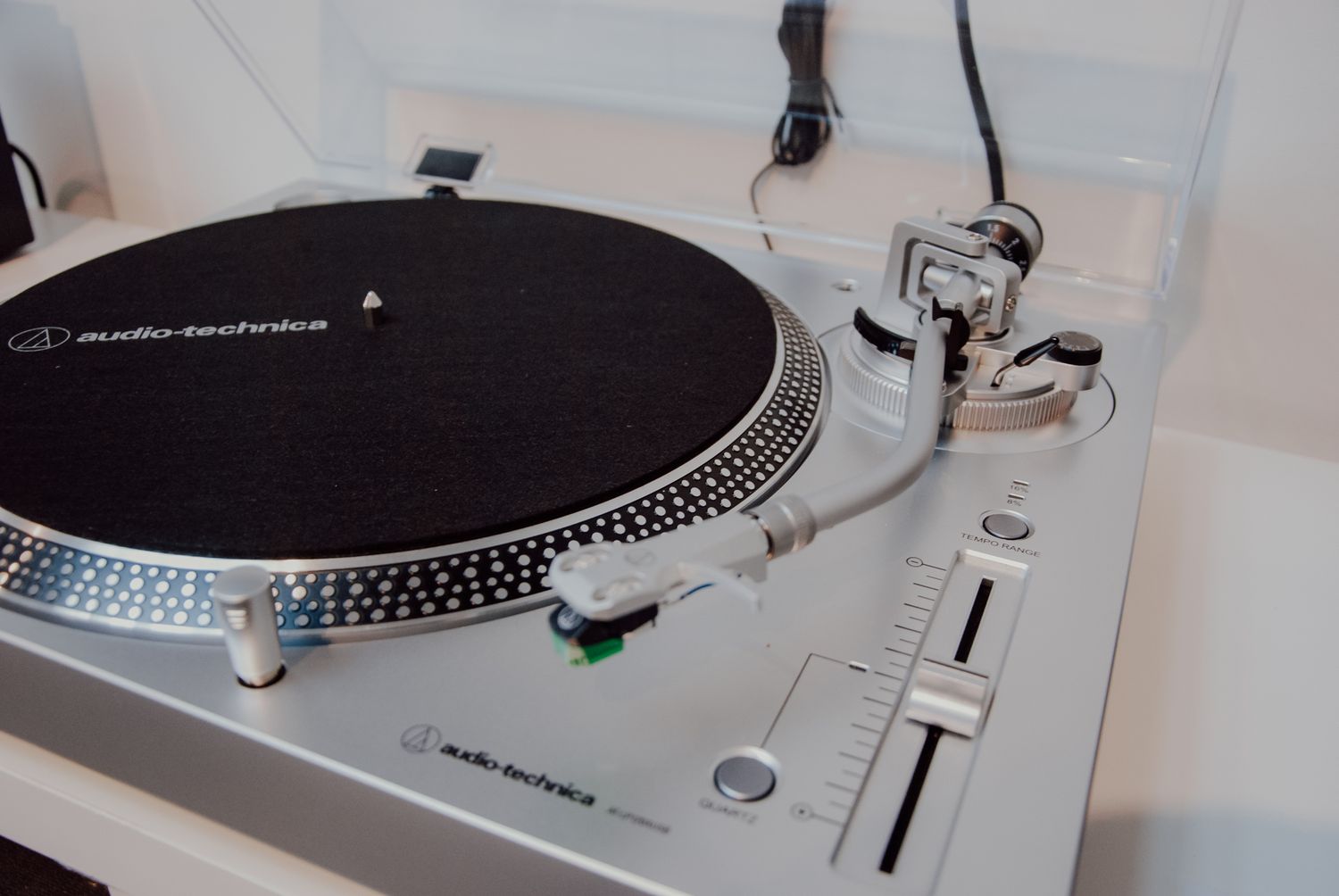

Turntable
What Is Tempo Range On Turntable
Published: January 20, 2024
Learn about the tempo range on turntables and how it affects your music experience. Discover the importance of turntable speed control and its impact on vinyl playback.
(Many of the links in this article redirect to a specific reviewed product. Your purchase of these products through affiliate links helps to generate commission for AudioLover.com, at no extra cost. Learn more)
Table of Contents
Introduction
Welcome to the world of turntables! If you’re a music enthusiast or a DJ, you’ve probably heard about the term “tempo range” in the context of turntables. Tempo range refers to the ability of a turntable to adjust and control the speed at which vinyl records are played. It plays a crucial role in maintaining the integrity and quality of the music being played.
In this article, we will explore what exactly tempo range means and why it is important in the world of turntables. We will dive into the technical aspects of turntables and uncover the factors that affect the tempo range. Additionally, we will discuss how to adjust the tempo range effectively to enhance your listening or mixing experience.
Whether you are a beginner exploring the world of vinyl or a seasoned DJ looking to upgrade your equipment, understanding the tempo range of a turntable is essential knowledge. So, let’s get started and unravel the mysteries of tempo range on turntables!
What Is Tempo Range?
The tempo range on a turntable refers to the range of speeds at which it can play vinyl records. It is typically measured in percentages and represents the deviation from the standard 33 1/3 rotations per minute (RPM) for LPs or 45 RPM for singles. The tempo range allows DJs and music enthusiasts to adjust the playback speed of the records to match their desired tempo or to sync with other tracks during a mix.
For example, a turntable with a tempo range of +/-8% means that it can play records at speeds ranging from approximately 30.5 RPM to 36.1 RPM. By increasing the tempo, the pitch of the music is raised, while decreasing the tempo lowers the pitch. This feature is particularly useful for DJs who want to beat match songs or create unique remixes.
The tempo range is an important factor to consider when choosing a turntable, as it determines the flexibility and versatility of the device. A wider tempo range allows for greater precision in adjusting the speed, providing more creative possibilities for DJs. Conversely, a narrower tempo range may limit the DJ’s ability to seamlessly transition between tracks with different tempos.
It is worth noting that modern turntables often include additional features like pitch control sliders or buttons, which allow DJs to make more fine-tuned adjustments to the tempo. These features complement the tempo range and provide even more control over the playback speed.
Now that we have a basic understanding of what tempo range means, let’s explore further how turntables work and why the tempo range is crucial in delivering an optimal listening or mixing experience.
Understanding Turntables
Before diving deeper into the importance of tempo range, let’s take a moment to understand the basic mechanics of a turntable. A turntable, also known as a record player, is a device used to play vinyl records. It consists of several key components that work together to produce sound.
The first component of a turntable is the platter, which is a flat surface that rotates at a constant speed. The vinyl record is placed on the platter and spins as the turntable is powered on. The rotation of the platter is controlled by a motor, typically a direct-drive or belt-drive mechanism.
Next, we have the tonearm, which is the long arm that swings in a circular motion over the record. The tonearm houses the stylus or the needle, which is responsible for tracking the grooves on the record and translating the physical movements into audio signals.
Finally, we have the cartridge, which is mounted at the end of the tonearm and holds the stylus. The cartridge contains magnets and coils that convert the vibrations from the stylus into electrical signals, which are then amplified and sent to the speakers or headphones.
Now that we have a basic understanding of how turntables work, let’s explore why the tempo range is an important aspect of these devices.
Importance of Tempo Range on Turntables
The tempo range on turntables plays a significant role in various aspects of the listening or mixing experience. Here are some reasons why the tempo range is important:
- Beatmatching: Tempo range allows DJs to beatmatch, which is the process of synchronizing the beats and tempos of two or more songs. This is a fundamental skill in DJing, enabling smooth transitions between tracks and creating seamless mixes. The ability to precisely adjust the tempo range allows DJs to match the beats of different songs, regardless of their original BPM (beats per minute).
- Creative Remixing: The tempo range provides DJs with the freedom to experiment and create unique remixes. By adjusting the tempo, DJs can change the pitch and tempo of the original song, adding their own spin and artistic flair to the music. This flexibility opens up endless possibilities for creating personalized mixes and capturing the attention of the audience.
- Genre Adaptability: Different music genres have varying tempos. For example, electronic dance music (EDM) typically has faster BPMs, while hip-hop or jazz may have slower BPMs. With a wider tempo range, DJs can adapt their turntable to suit different genres and seamlessly transition between tracks of varying tempos, ensuring a consistent energy flow on the dancefloor or in a mix.
- Record Variations: Vinyl records are prone to slight variations in speed due to manufacturing inconsistencies or wear and tear. The tempo range on turntables allows DJs to compensate for these variations and manually adjust the playback speed to ensure accurate pitch and timing. This is especially crucial for DJs who prefer vinyl records, as it helps maintain the integrity of the music during their performance.
- Personal Listening Preference: The tempo range is not only beneficial for DJs but also for music enthusiasts who enjoy listening to vinyl records. It allows them to fine-tune the playback speed according to their personal preference, creating a more enjoyable listening experience.
Overall, the tempo range on turntables is essential for DJs and music enthusiasts alike. It empowers DJs to mix and manipulate music creatively, adapt to different genres, and maintain accurate pitch and timing. It also enhances the listening experience, providing flexibility and control over the playback speed.
Factors Affecting Tempo Range
The tempo range on turntables can be influenced by several factors. Let’s explore the key elements that affect the tempo range:
- Mechanical Precision: The mechanical precision of the turntable is crucial in maintaining accurate and consistent tempo control. Factors such as the quality of the motor, platter, and tonearm can impact the precision of speed adjustments. High-end turntables often offer better mechanical precision, resulting in a wider and more precise tempo range.
- Motor Type: Turntables can feature two types of motors: direct-drive and belt-drive. Direct-drive turntables typically have a wider tempo range and offer more precise speed control due to the direct connection between the motor and platter. On the other hand, belt-drive turntables rely on an elastic belt to drive the platter, which can limit the available tempo range.
- Turntable Design: The design and construction of the turntable play a role in determining the tempo range. Higher-quality turntables often incorporate advanced engineering and materials that minimize vibrations and maximize speed stability. These design elements contribute to a wider and more accurate tempo range.
- Pitch Control Features: Many turntables offer additional pitch control features, such as pitch sliders or buttons, which allow DJs to make fine-tuned adjustments to the playback speed. These features enhance the tempo range by providing more control and precision over speed adjustments.
- Vinyl Quality: The quality of the vinyl record itself can impact the accuracy of the tempo range. Records that have been poorly manufactured or have wear and tear may have variations in speed, which can limit the effective tempo range of the turntable. DJs and music enthusiasts should ensure that their records are in good condition to optimize the tempo control on the turntable.
It is important to keep in mind that the tempo range may vary between different turntable models and brands. When considering a turntable, it is advisable to research and compare the tempo range specifications to select a device that best suits your needs and preferences.
Now that we have explored the factors affecting the tempo range on turntables, let’s move on to how the tempo range can be adjusted and optimized for an optimal music experience.
Adjusting the Tempo Range on Turntables
Adjusting the tempo range on turntables requires precision and understanding of the controls and features available. Here are the steps to adjust the tempo range effectively:
- Locate the Pitch Control: Most turntables have a pitch control slider or knob, usually located near the tonearm or on the front panel. This control allows you to adjust the tempo or speed of the playback.
- Understand the Measurement Units: Tempo range on turntables is often measured in percentages or as a pitch control range, such as +/-8% or +/-10%. This indicates the deviation from the standard RPM. Familiarize yourself with the specific measurement units and their corresponding range on your turntable.
- Set the Speed to the Center Position: Start by setting the pitch control slider or knob to the center position or 0%. This ensures that the music is played at its original speed without any adjustment.
- Experiment with Speed Adjustments: Gradually move the pitch control slider or knob up or down to increase or decrease the tempo. Every unit of percentage represents a deviation from the original RPM. For example, moving the slider to +4% will increase the tempo, while moving it to -4% will decrease the tempo.
- Listen and Fine-Tune: As you make adjustments to the tempo, listen carefully to the music to determine the desired speed. Pay attention to pitch changes and the overall feel of the track. Fine-tune the tempo until it aligns with your preferences or matches the tempo of another track you want to mix.
- Practice and Familiarize: Adjusting the tempo range on turntables requires practice and familiarity. Spend time experimenting and getting comfortable with the controls. Practice beatmatching and mixing to further develop your skills in utilizing the tempo range effectively.
Remember that adjusting the tempo range on turntables is a creative tool and should be approached with experimentation and an open mind. It allows you to customize the music to your preference or mix seamlessly between tracks of different tempos.
Now that you know how to adjust the tempo range on turntables, let’s explore some tips for using the tempo range effectively in your DJing or listening sessions.
Tips for Using Tempo Range Effectively
Using the tempo range on turntables effectively can greatly enhance your DJing or listening experience. Here are some tips to make the most out of the tempo range:
- Master Beatmatching: Practice beatmatching to seamlessly mix tracks of different tempos. Use the tempo range to adjust the speed of the incoming track, matching it with the currently playing track. This skill will help create smooth transitions and maintain the energy on the dancefloor.
- Experiment with Remixes: Play with the tempo range to create unique remixes of your favorite songs. Increase or decrease the tempo to give a fresh perspective to the music. Don’t be afraid to experiment and let your creativity flow.
- Blend Genres: Utilize the tempo range to blend tracks from different genres. Adjusting the tempo can help transition from a slower tempo track to a faster one seamlessly, keeping the energy flowing and surprising your audience with unexpected combinations.
- Use Gradual Adjustments: When making tempo adjustments, do it gradually and in small increments. This allows for smoother transitions and provides more control over the overall mix. Sudden, drastic changes in tempo can disrupt the flow of the music.
- Pay Attention to Key Compatibility: When adjusting the tempo, pay attention to the key of the songs. Altering the speed can also affect the pitch, which may cause songs to sound off-key when mixed together. Use your judgment and ear to ensure harmonious blends.
- Practice Tempo Transitions: Set aside dedicated practice sessions to work on transitioning between tracks with different tempos. Focus on building your skills in smoothly adjusting the tempo range while maintaining a consistent beat and groove.
- Listen and Adjust to the Crowd: When DJing for a live audience, pay attention to the crowd’s energy and reaction. Use the tempo range to adapt to their preferences and keep them engaged. Learning to read the crowd and adjust the tempo accordingly is a valuable skill for any DJ.
- Experiment with Vinyl Manipulation: Adjusting the tempo range can create interesting musical effects when used in combination with scratching or other vinyl manipulation techniques. Push the boundaries and see how you can incorporate tempo adjustments into your vinyl performance.
Remember, practice is key to mastering the effective use of the tempo range on turntables. Take the time to explore and experiment with different techniques to unleash your creativity and push the boundaries of what’s possible with your music.
With these tips in mind, you’re now equipped to harness the full potential of the tempo range on turntables for an immersive and captivating musical experience.
Conclusion
The tempo range is a fundamental aspect of turntables that allows DJs and music enthusiasts to control and manipulate the speed of vinyl records. Understanding tempo range enhances the ability to beatmatch, create unique remixes, adapt to different genres, and maintain accurate pitch and timing.
We explored the key factors that affect the tempo range, including mechanical precision, motor type, turntable design, pitch control features, and vinyl quality. These factors contribute to the overall flexibility and accuracy of tempo adjustments on turntables.
Adjusting the tempo range requires familiarity with the controls and features of the turntable. By following the steps of locating the pitch control, setting the speed to the center position, experimenting with speed adjustments, and fine-tuning, you can effectively utilize the tempo range to meet your musical preferences and mixing needs.
To make the most out of the tempo range, we provided tips such as mastering beatmatching, experimenting with remixes, blending genres, using gradual adjustments, paying attention to key compatibility, practicing tempo transitions, listening to the crowd, and exploring vinyl manipulation techniques. These tips will help you maximize the creative potential of the tempo range and deliver captivating performances.
In conclusion, the tempo range is an essential feature of turntables that empowers DJs and music enthusiasts with control and creativity. By understanding the importance of tempo range, mastering adjustments, and implementing effective techniques, you can elevate your DJing or listening experience to new heights.




